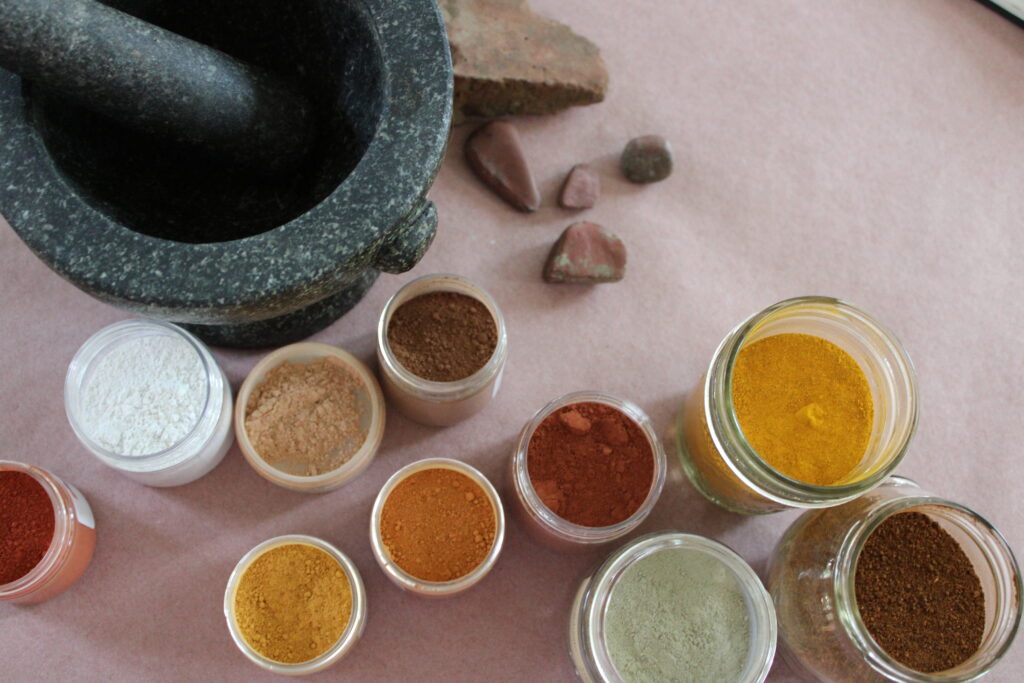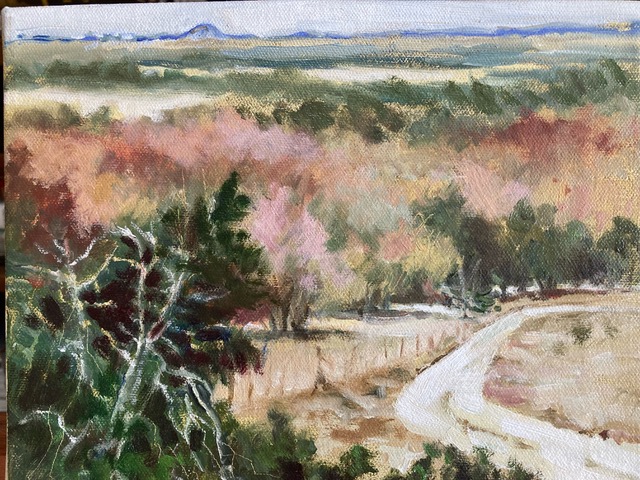Finding Pigments is an Adventure

Exploring Cliffs, Rivers, and Fields
I climb up a cliff to examine a clump of dirt, slowly rubbing the silt between my fingers, feeling the texture—is it scratchy or chalky in texture? I get out my spade and collect a sample, depositing it into a plastic bag.
Down at the bank of the river I can smell runoff from the last rain, and in the water, I see a broken shard of green pottery, a piece of moss stuck on a small tree branch, floating by. I take a step backwards and fall into the muddy bank. Now I notice the striated silt; a light gray layer of clay can be seen. I reach over and dig horizontally, and the gray clay has stuck in my fingers. More pigment!
After drying off I make my way back through the field. At the edge of the road where I have parked my car there is a meadow. And there, by the side of the road is a patch of golden rod. The golden tassels are in full bloom. I throw my backpack into the car and walk back to break off the golden tassels, a colorful gift of the season. The powder on the tips leaves my fingers a glorious shade of yellow.
Back at the Farm
Back at the farm, I take a short walk to a shale outcropping. There is a large pile of crushed sand, pebbles, and pieces of broken brick from the old farmhouse. My husband has moved all this earth by tractor for garden projects where he mixes soil with local horse manure for next year’s garden.
But for me it is a treasure trove of pigments. The brick was sun-cured two centuries ago, and the piece I’ve discovered is perfect; it’s hand-sized and will be easy to break up before grinding into powder.
Making Paint
Later, I will pulverize the broken piece of brick in a mortar with a pestle. Then I will sift it again before grinding it together with a binder—gum arabic for watercolor or linseed oil for oil paints.
Wheat and chamomile and groundwater are also good for binding. I stir and stir the wheat flour into the chamomile tea until it becomes a thick goo. After it cools, I find that I can successfully mix it with any grit. After that I can paint it on any surface; it will harden and stay there! But remember that water loves earth pigments, so ‘earth paint’ will prefer to be applied to surfaces that have an innate ability to absorb minerals and dust, like our skin. Wear gloves!



